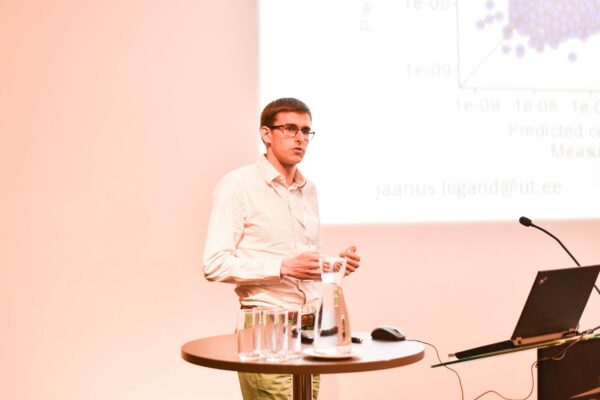Last week Dr. Jaanus Liigand received the first prize on the Estonian National Contest for University Students for his doctoral thesis Standard substance-free quantification for LC/ESI/MS analysis based on the predicted ionization efficiencies.
During his PhD studies, Jaanus investigated quantitatively the factors affecting the ionization efficiency of compounds in electrospray ionization. For that ionization efficiencies for more than 350 compounds were collected and measured under numerous conditions. In general, more basic and more hydrophobic compounds possessed higher ionization efficiency in ESI positive mode. Also, the effect of eluent on electrospray ionization efficiency was significant. Higher ionization efficiencies were observed at high organic modifier content and, generally, lower pH values. Though, the effect of pH depends both on the analyte as well as on the buffer type.

In his last paper, Jaanus, applied ionization efficiencies to the service of non-targeted screening. It is a big problem to make draw quantitative conclusions from non-targeted analysis as the standard substances for a big part of the detected compounds are usually not available in the lab. He developed a three-step approach: (1) predict the ionization efficiencies with machine learning, (2) use a set of compounds to transfer the generic ionization efficiencies to the instrument and lab-specific response factors and (3) calculate the concentrations from the measured peak areas and predicted ionization efficiencies.
The approach that Jaanus developed during his PhD is now tested through a number of collaborations for application in food, environmental, metabolomic and pharmaceutical analysis. To make this approach more accessible it has been incorporated to the software by Quantem Analytics.

